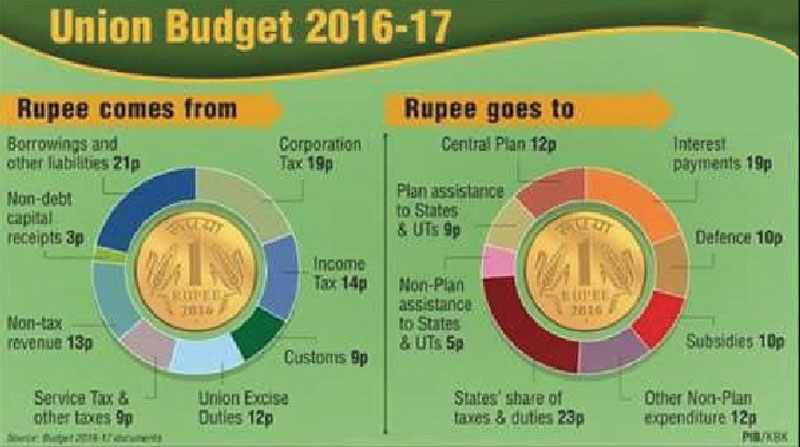The Indian Budget 2016-17: Challenges ahead
The emphasis on entrepreneurship development makes it a landmark budget in this regard
The challenge to Indian Finance Minister Arun Jaitley’s 3rd budget is how he can please both the farmers and industrialists. Farmers want to get his ambitious land bill through Parliament so that he can execute his many pan-India infrastructural projects on time. Farmers also want to get their votes, especially in the giant UP state with elections coming up in a few months. He needs much greater success in the Upper House of Parliament for him to have a free rein in his political, economic and social strategies to continue in power with a sweeping victory in the next general elections too.
If you keep in mind that almost 80% or a little more of the total revenue is already tied up in social and security services; and paying for public administration and foreign debt, how will he please industrialists with the remaining funds, especially given his target to keep the budget deficit at 3.5 % of GDP? One obvious answer is by further liberalising FDI and FII, and ensuring a business-friendly policy regime to make it easy to do business for all, especially SMEs.
The other is to tax the super-rich a little more and garner as much of the black money lying in the real estate sector into the formal sector.
Last but not the least, the greatest challenge must be that, so far, all the growth in the Indian economy has been growth without employment gains. It would be interesting to see how he tackles this structural challenge. Probably by giving greater priority to irrigation and low income housing for urban areas with all its alarming slums and squalor.
Most thought he would relax to take the deficit to 3.9 to 3.7 % of GDP given the need to meet the Pay Commission recommendation (24% increment!) and the One Man One Pension demands from the security force. What impressed me most about this budget is the emphasis on rural development which will lead to transformation of village societies. For one thing, he has said that farmers’ income will be doubled by 2020 which is admirable including having all villages electrified by 2018. There will be massive emphasis on irrigation and agri-credit along with linking farms to markets with rural roads and eradication of the control of middlemen by reforming relevant acts protecting them by moving towards a nationally unified agri-markets.
A dynamic rural sector from the people in the bottom of the pyramid, so to speak, will create the consumption demand to help sustain the economic growth trajectory which was largely absent in the past. The emphasis on entrepreneurship development makes it a landmark budget in this regard. Start-ups and provision of entrepreneurship skills along with opening up of 1500 multi-skill training centres across India are credible manifestations of it. Skill development will be undertaken amidst minorities and a new thrust introduced — to make scheduled castes and schedules tribes and women entrepre neurs with Rs 500 crores investment to produce 250000 entrepreneurs.
As expected he is dependent on FDI — has now allowed 100% in food processing industries — and a conducive business climate for investments; investments in infrastructure — roads, rail, river ways, ports and air ports; oil exploration; human capital development with a target of one million skilled people produced to meet market demands; opening up the transport sector to national market forces; targeted delivery of all subsidies using the Adhar ID scheme; affordable housing investments in urban areas which will also create jobs, creation of 10 world class universities from the public and private sectors to promote innovation and R & D. It is a remarkable budget that balances the need for economic growth with social development by catering to the needs of all classes and castes as well as age groups and women.
It would have been most useful if Jaitley spent time to lay down, specifically, what each of his clusters of investments, if not each programme, had estimated the jobs to be created since employment is a derived demand of investments. The youth want jobs.
He would be advised that the next time around he also formulates his budget by estimating the jobs that need to be created, given the Indian demographics, and what manufacturing and other investments he would have to mobilise, promote and provide incentives in the context of the skills supplied by educational institutes and demanded by the manufacturing industries which needs to be as high as 25% of the GDP if India is to be a world economic power.
Since accountability and transparency are paramount, and India seeks to move towards Outcome Budgeting it would be most useful if he had stated the envisioned outcome for each project so that the people could monitor his execution skills which is a question mark that applies to all budgets, their implementation, monitoring and evaluation.
Rana is Professor at SAIM & former Finance Minister






